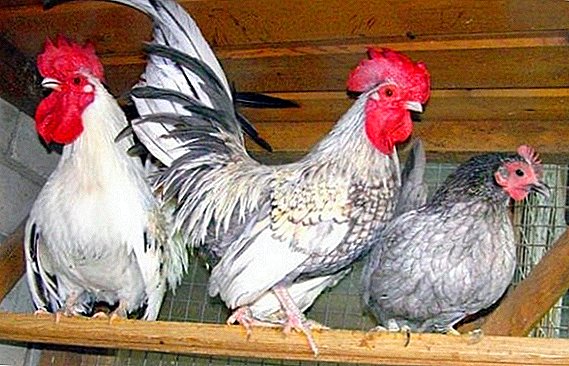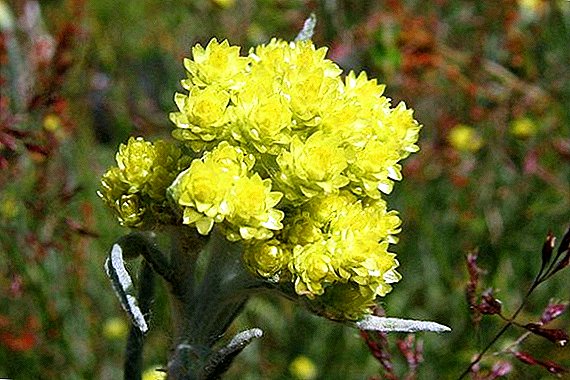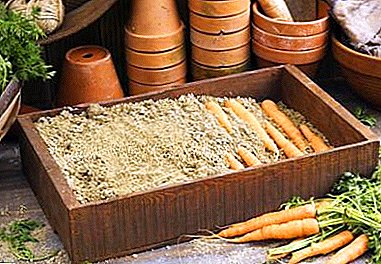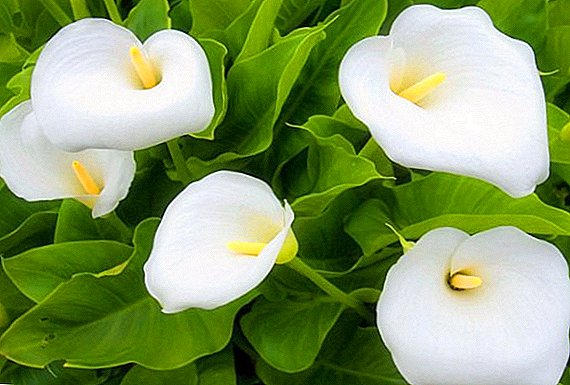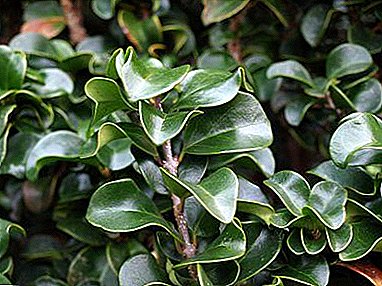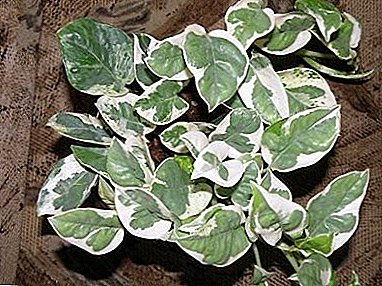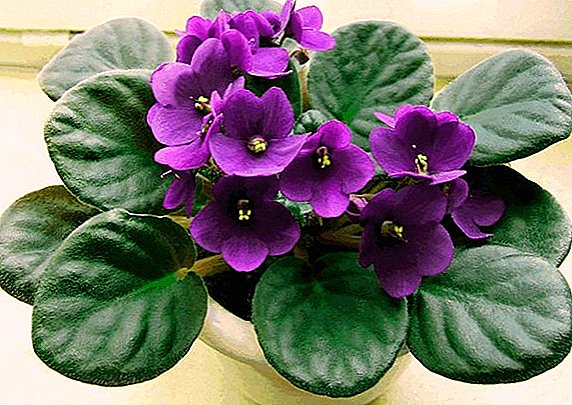 One of the most popular home plants are violets. Despite the fact that many representatives of these flowers are very capricious and require constant care, they literally fall in love with themselves at first sight, charming with its beauty. Fortunately, there are also unpretentious and at the same time no less decorative species, for example, one of these plants is barbarous or Saintpaulia.
One of the most popular home plants are violets. Despite the fact that many representatives of these flowers are very capricious and require constant care, they literally fall in love with themselves at first sight, charming with its beauty. Fortunately, there are also unpretentious and at the same time no less decorative species, for example, one of these plants is barbarous or Saintpaulia.
Description
Africa is considered to be the birthplace of the saintpaulia, and it received its name in honor of its discoverer Walter von St. Paul, who discovered it while staying in Tanzania in the Uzambarskie mountains, and described it in detail. After the show at the prestigious flower exhibition, followed by a long selection, during which formed many varieties and types of plants.
Read about the intricacies of growing the Vittrock violet, perennial, tricolor and night violet.

Saintpaulia is a miniature indoor plant. On its shortened stem is a rosette with numerous long-pebble leavesthat differ in shape and texture depending on the variety. They can be round, ovoid and oval with a heart-shaped base.
On the sheet plate has a characteristic velvety coating. The color palette of the foliage is also diverse, the leaves can be painted in both pale green and dark green above, and below light green, bright green and purple. Streaks on the foliage prominently.
Did you know? Numerous beliefs and folk signs are associated with violets. It is believed that the plant is very imbued with the atmosphere in the house and can even warn its owners about various changes. It is said that the sudden yellowing of foliage can be a signal that financial losses are coming, and the abundant blooming flourishes the good news.
Buds on the violet are quite small, but they are very many. During the flowering period on one saintpaulia, up to 100 buds can be simultaneously blossomed. At the moment there are more than 1000 types of violets, so the variety of colors, shapes and textures of their flowers really amazes the imagination. 
Petals are simple, edged with fringe, embossed and wavy, and their colors are plain and variegated. There are pink, white, blue, blue, purple and various combinations of these colors. Uzambarskaya violet - absolutely unpretentious in the care, so it is so popular to grow it at home.
Landing
In order for the violet for a long time to please its decoration and not be ill, it is very important to plant it correctly. Of great importance is the capacity for planting and the substrate. The pot in which the herb will grow should be 3 times smaller than the diameter of the flower.
For a young violet fit capacity with a diameter of 5-7 cm. When choosing a soil, preference should be given to ready-made substrates or to make them independently. In the garden ground add a tablespoon of superphosphate and bone meal (150-200 g).
Important! For good growth of violet, it is necessary to make good drainage, provide special openings for outflow of excess moisture and normalize its concentration in the pot.The prepared container should be filled to the middle with the substrate and place the violet in the center, then pour the remaining soil mixture in such a way that the distance between the soil and the canister is at least 2 cm. After that, lightly tamp the substrate and pour the flower.

Breeding
With the reproduction of this indoor flower will not have any problems. Even a novice florist can do this, the main thing is to know the basic principles of this procedure and to ensure proper care for young plants.
Leaf cuttings
Propagation of barbell violet is carried out by cutting. You can carry out the procedure all year round, but experienced growers recommend doing it in spring or summer, since it is during this period that the plants will take root better.
Violets are often planted in flower beds to create a beautiful landscape design. And such species as tricolor and night violet are used in traditional medicine.It is necessary to cut healthy, strengthened leaves so that the cutting length is 1.5-2 cm, it is placed in water, sand or peat mixture before the formation of roots, which will appear in 20-30 days. After the violets have taken root, they need to be transplanted into separate small containers.
For young plants, you need to prepare a special soil mixture, namely, to mix sod, sheet and peat soil with humus and sand. Ready substrate can be purchased at specialized flower shops. After 40-45 days, the Saintpaulia is transplanted into a larger pot, in which it will grow. When transplanting, one should not forget that good drainage is very important for violets.
Pasynkami
Many varieties of violets have lateral processes or, as they are also called, stepchildren. They are carefully cut, and then rooted in the same way as cuttings. If there are no lateral processes on the violet, they will appear if you pinch the growth point. Suitable for landing are stepchildren, whose height is 2.5-3 cm.
Care
When breeding Saintpaulia, it is important to provide the plant with comfortable conditions and proper care, which consists in following simple rules and does not take much time and labor, but will definitely have a beneficial effect on the health and decorativeness of the plant.
Conditions (temperature, light, humidity)
The temperature in the room where violets are grown should vary between + 20 ... +25 degrees. A lower or higher temperature is considered not comfortable for the plant and may cause the lack of flowering.
Important! A prerequisite is the absence of drafts in the room where Saintpaulia grows.These flowers very fond of light, but in no case direct sunlight. The best option for landing is the western and eastern windows. In cases where it is impossible to provide natural light, fluorescent lamps can be used, the main thing is that the flower be in the light for 10-12 hours a day. In order for the violets to grow evenly, they need to be turned by different sides to the light every 2-3 days.

Saintpaulias prefer moist air, this can be achieved by placing containers with water on the windowsill or humidifying the air around them several times a day with a spray gun.
Watering
Care of the senpolia at home suggests regular timely watering. Of great importance is the quality of water used, it must be soft. Accordingly, before the procedure it is necessary to defend or boil it, you can also freeze and thaw the water.
The best way is considered to be watering through the pan, pour liquid into it, and after 20-30 minutes the residue is drained. You can water the plant and the top, in this case, you need to pour water very carefully under the root, preventing splashing of drops on the leaves and stems. Conduct water treatments 2-3 times a week as the soil dries.
Top dressing
Fertilize flowers in the active growing season, that is, in spring and summer, once 2-3 weeks. For these purposes, you can use liquid complex mineral supplements. If the violets are provided with artificial lighting, then it will be good to fertilize them all year round.
Transfer
Adult plants recommend replanting no more than once a year. Prefer small pots, as a large amount of free space can lead to the fact that the roots begin to rot. Drainage is laid out on the bottom of the tank, then it is filled with a substrate and the violet is placed so that the growing point is flush with the ground and the foliage is slightly higher than the soil.
Important! High or deep planting can cause the flower to stop growing or start to rot, so be sure to pay attention to it during transplanting.
Diseases and pests
If the temperature is not observed and improper care, the barbed violet loses its vitality, which can provoke various diseases. They can be caused by an overabundance or lack of light, too much watering, cold or heat, and too humid air.
That a plant experiences discomfort can be determined by slowing growth and changing the color of the foliage. Pests such as the cyclamen mite, whitefly and aphid can appear as an uninvited guest on the violet.
Saintpaulias are susceptible to diseases such as gray rot and powdery mildew, and if they do occur, it is necessary to immediately treat with special drugs.

Bloom young saintpaulia
Violets bloom 6 months after planting, and flowering continues for about 8 months. In order for them to bloom profusely and long, a large amount of light is very important.
Flowering old saintpaulia
Adult Saintpaulias bloom as long as young ones. Of course, they are distinguished by a greater number of buds: on a plant they can be from 80 to 100 pieces.
Did you know? The first mention of violets date back to 500 g. er In ancient Greece, it was believed that they symbolize love and fertility. Petals were made from the petals of the plants, and they were also added to drinks and food as a seasoning.

These compact, charming flowers are able to decorate and complement any interior and delight those around with their incredible blooms. Very often the planting of one such violet leads to the appearance of a whole collection consisting of various varieties and species, and this is due to the fact that they are unpretentious in care and are very beautiful.



